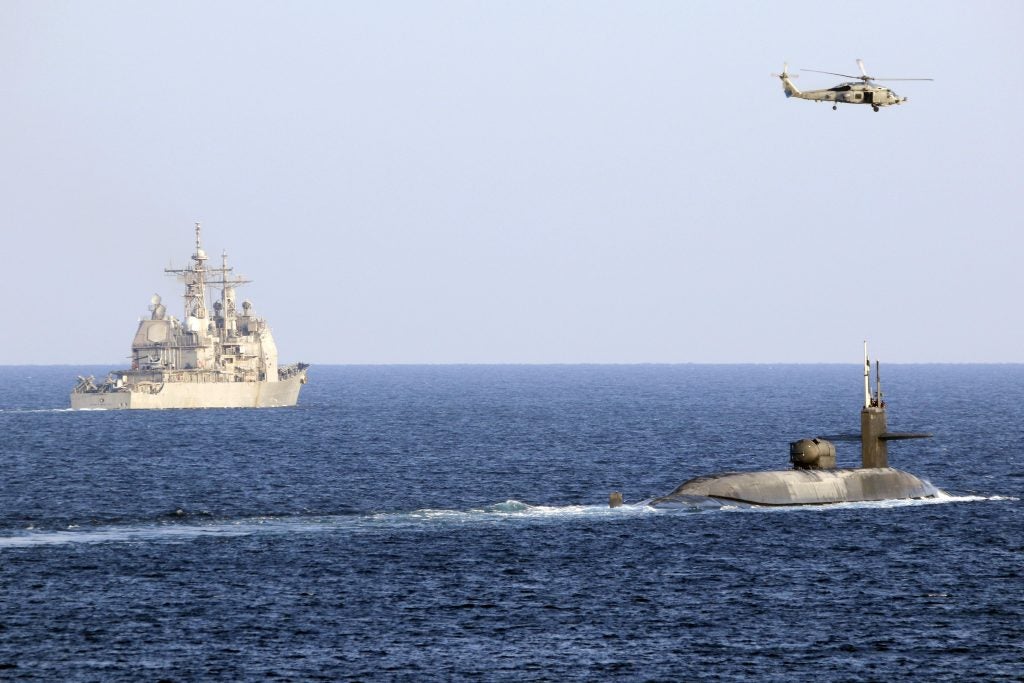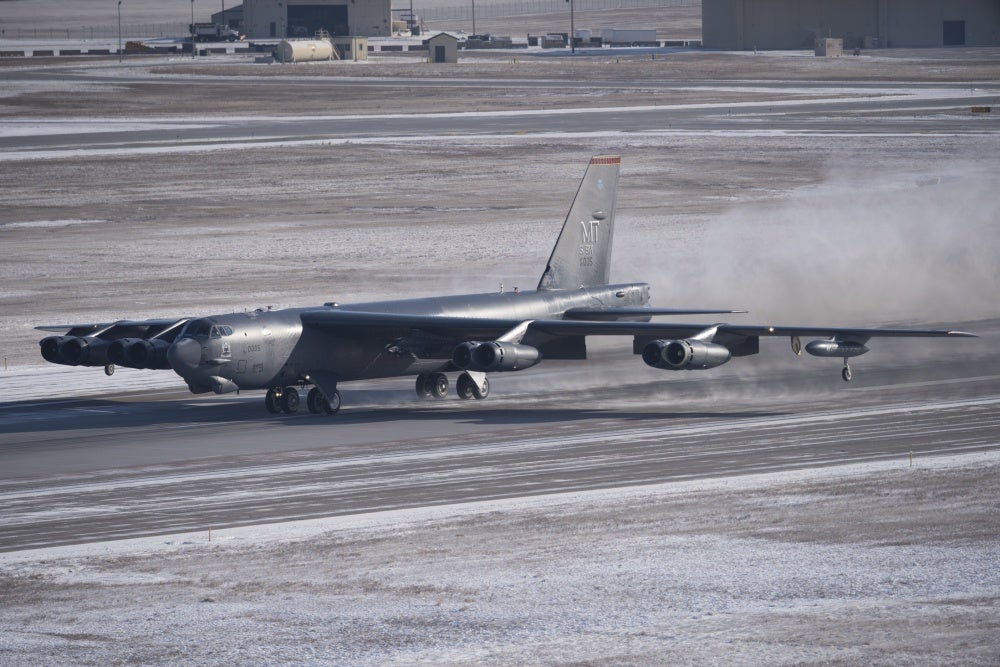US Sends Message with USAF and US Navy Assets in Persian Gulf Show of Force
Earlier this month two B-52H strategic bombers were deployed over the Persian Gulf in a 36 hour flight from Barksdale, LA, and back. Today, the US Navy sent several guided missile cruisers and a guided missile sub through the Strait of Hormuz sending a strong signal to Tehran. The flight of B-52Hs was the first of a number of warning signals sent by Washington in order to discourage Iran from any retaliation on the US bases in Iraq over Mohsen Fakhrizadeh’s assassination in November. Armed groups of Shia mercenaries and extremists remain active in Iraq and continue receiving weapons from Iran. In January 2020 two US bases were attacked by Iran and Iranian-backed militias in response to the assassination of Qassem Soleimani, a senior officer with the Iranian Revolutionary Guard, in an American drone strike.

During the flight over the Atlantic Ocean, Europe, and the Middle East, B-52s (callsign: COMAL11 and COMAL12) were refueled by KC-135 and KC-10 tankers. The bombers were also escorted by Saudi F-15s when flying over the region. CENTCOM states that the planes remained at a safe distance from the coasts of Iran.
The deployment of B-52s was also a test of the possibility of rapid deployment of forces by the United States. The coordination between the bombers and the tankers was essential for the success of the operation. This multinational effort resulted in an effective show of force to the Iranian regime. Similar action was conducted in November, when a pair of B-52H flew from a base in Minot, ND.
Long flights of strategic bombers are not as noteworthy as they were only a couple of decades ago. Operations like the Royal Air Force’s Black Buck raid conducted by the during the Falklands War. A single Avro Vulcan strategic bomber conducted an airstrike on Port Stanley’s airfield in an 18-hour flight from Ascension Island and back.
In another show of force the US Navy has sent a significant force through the Strait of Hormuz, on the 21st December, the US Naval Forces Central Command released a statement confirming the transit of “the nuclear-power Ohio-class guided-missile submarine USS Georgia (SSGN 729) along with the guided-missile cruisers USS Port Royal (CG 73) and USS Philippine Sea (CG 58).” The statement continued by describing the force as “an inherently flexible maneuver force, capable of supporting routine and contingency operations”.

It is unusual for the US Navy to make a point of disclosing the position of a guided-missile boat. The statement notes that USS Georgia is capable of carrying “up to 154 Tomahawk land-attack cruise missiles. The platform can also be configured to host up to 66 Special Operations Forces.” This last point is interesting as Georgia made the transit surfaced with what appears to be a variant of the SEAL Delivery Vehicle.
The US’s capability to react all over the world is due to its logistical capabilities. Ranging from its aircraft carriers to its long-range strategic bombers and tankers. Its net of bases and allies around the globe allows for precise strikes even if it means a tremendous organization and engagement from personnel and equipment. It also sends a clear message to the government in Teheran – the US is ready to intervene and not only has aircraft that can reach targets with ease but also has significant assets in the area.
Additional reporting from Matthew Moss

